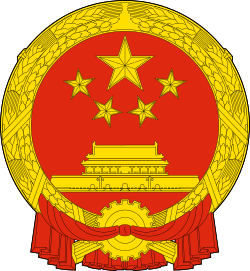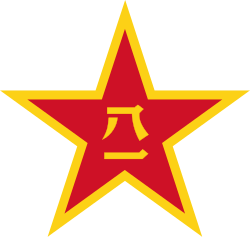Supreme Military Command of the People's Republic of China
 |
| This article is part of a series on the politics and government of China |
|
|
Throughout the history of the People's Republic of China, the position that effectively reigned as the Commander-in-Chief of the Armed Forces changed from time to time. During some periods, it was not exactly clear who was the supreme commander of the People's Liberation Army. Recently, Chairman of the Central Military Commission serves as the Commander-in-chief of the People's Liberation Army. The officeholder is usually the General Secretary of the Communist Party of China as well as Paramount leader.
From 1954 to 1968, the de jure Commander-in-Chief of the Armed Forces was the President, who was also the Chairman of the National Defence Council. However, a similar command structure inside the communist party known as the Party Central Military Commission, whose Chairman was the de facto Commander-in-Chief of the Armed Forces. The Chairman of the Central Military Commission, Mao Zedong, who the Chairman of the Communist Party of China served as the paramount leader. Chairman of the National Defence Council included Liu Shaoqi, who from 1959 to 1968, was PRC's President. Even though the President was the de jure supreme commander of the military, it nonetheless was a subordinate of the CMC Chairman.
From 1975 to 1982, the head of the military was the Chairman of the Communist Party of China. This gave constitutional power to the head of the Chinese Communist Party.
From 1982 onwards, the Commander-in-Chief was the Chairman of the Central Military Commission. This position, however did not always give the person entitled the top command as was the case with Hua Guofeng. Deng Xiaoping was able to effectively control the military as the Chief of Staff of the PLA from 1978-1981.
